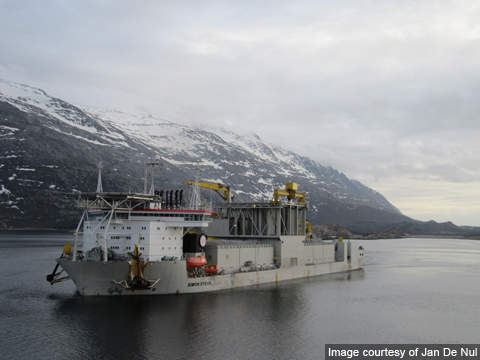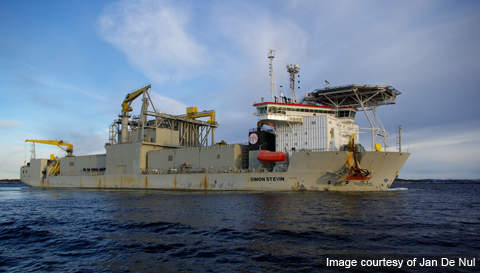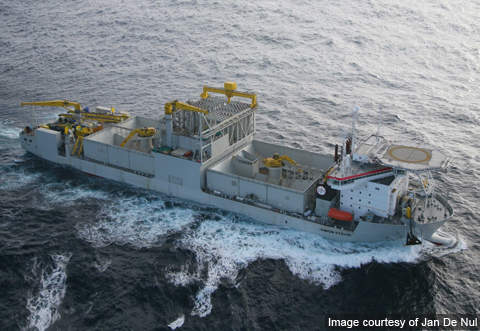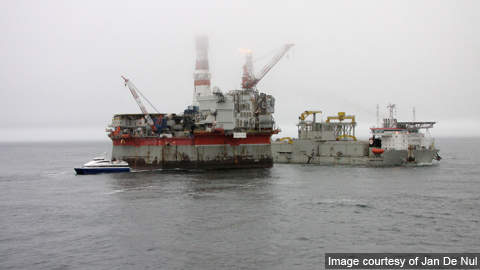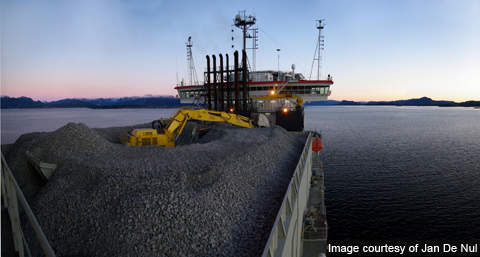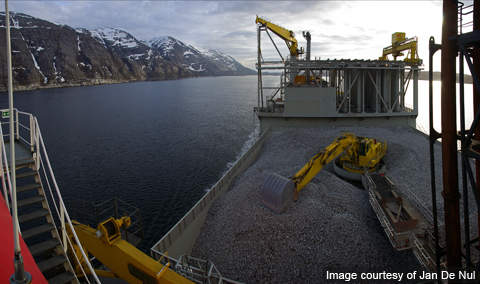Simon Stevin is a deepwater mining and fallpipe vessel that was delivered in early 2010. With a load capacity of 33,500t, she is considered to be the largest vessel of her kind in the world.
She is also the first purpose built fallpipe vessel. Nordnes is the second largest fallpipe vessel.
Ordered by Dredging and Maritime Management, a subsidiary of Jan De Nul Group, the vessel was built by Construcciones Navales del Norte (CNN).
The vessel was built as part of Jan De Nul’s 2007-2011 investment programme worth €1.8bn.
The vessel will be mainly utilised in the offshore market to install oil and gas pipes at large depths. The ship started off operations with two rock dumping projects in Australia.
Simon Stevin design and features
The basic design of the vessel was developed by Vuyk Engineering Rotterdam. The structural design was completed in cooperation with the builder CNN and the owner Jan De Nul. The hull was designed in close cooperation with Bureau Veritas (BV).
The vessel has the capacity to carry 33,500t of quarry rock in two large rock hoppers located on the main deck that can hold 20t/m2. The two hydraulic excavator cranes discharge the rocks into the fall pipe module. Weighing 2,000t, the fall pipe module was built in Antwerp, Belgium.
It is as large as an apartment complex consisting of 70 apartments spread over eight floors. The rocks can be discharged into the sea to a maximum water depth of 2,000m. Depending on period and direction, the vessel can operate in a wave height of 3.5 to 4.5m.
The fallpipe is tied beneath the vessel so the rocks can be placed with great accuracy and features an ROV (remotely operated vehicle) that accurately positions its lower end. A second ROV is used for surveying and other interventions.
The 191.5m long vessel features a helicopter landing platform. A total of 70 people can be accommodated onboard. The breadth of the vessel is 40m, draught is 8.5m and depth to main deck is 13.2m. The length between perpendiculars is 175m. The vessel also features a moon pool which is located between the two rock hoppers. The ship, when fully loaded, can cruise at a speed of 15.5kt.
Construction of the deepwater mining and fallpipe vessel
The order for the construction of the vessel was placed in 2007. The first steel was cut in December 2007 and the keel was laid in April 2008 in Sestao, Bilbao, Spain. She was launched in March 2009. Construction lasted 26 months and the ship was finally handed over to her owner in February 2010.
Propulsion, power and performance
Simon Stevin is a diesel-electric vessel fitted with two bow thrusters and four propulsion thrusters. It is powered by a series of five MAN Diesel 32/40 main engines.
Each engine can generate 4,500kW at 720rpm. The engines are manufactured by STX Engine Company, a Korean licensee of MAN Diesel.
The MAN Diesel 32/40 four stroke engine runs on heavy fuel oil (HFO). Its design is optimised to achieve uninterrupted operation at loads down to 20% and to accept overloads of 10%. The engine is fitted with a jet-assist device that injects compressed air directly into the compressor wheels of the turbochargers to attain quick response to high and sharp load variations. The engine requires minimum maintenance and has low lube-oil consumption (0.5 to 0.8g/kWh). Selective catalytic reduction (SCR) technology incorporated in the engine helps to restrict NOx emission levels below the upper limits set by the IMO (International Maritime Organization).
The vessel is also equipped with an auxiliary diesel generator set and a 350kW emergency generator set.

